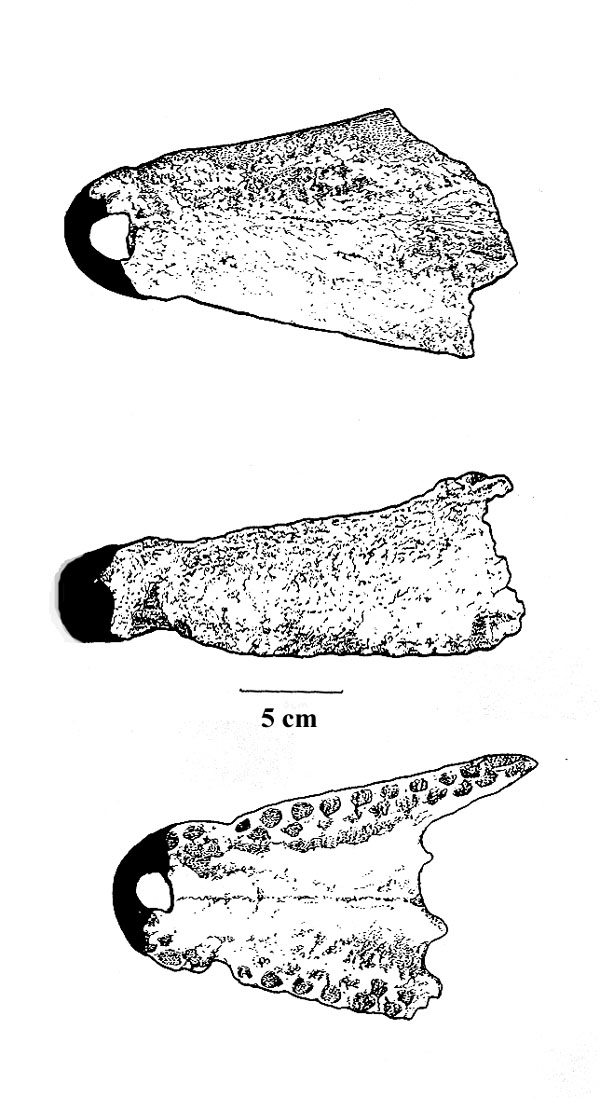
Species: fortirostrum MOLNAR, 1981
Etymology:
Holotype: AM F.57844
Locality: Tea Tree Cave, near Chillagoe, North Queensland State, Australia.
Horizon:
Biostratigraphy:
Age: Pleistocene Epoch, Upper Quaternary Subera, Upper Cenozoic Era.
Material: A cranial rostrum lacking anterior end and teeth.


Quinkana fortirostrum (modified from Molnar, 1981).
_____________________________________________________________________________________
Species: timara MEGIRIAN, 1994
Etymology: In mythology of the Yalanji people of Cape York, as retold by Trezise
and Roughsey 91982), the Timara are thin Quinkins (Spirits). The allusion
is to the narrower snout of Q. timara relative to Q. fortirostrum.
Holotype: NTM P895-19
Locality: ‘Blast Site’, Bullock Creek Locality, Camfield Station, Lat. 17°7’S, Long. 131°31’E, Northern Territory, Australia.
Horizon: Camfield beds.
Biostratigraphy:
Age: Middle or Upper Miocene Epoch, Lower Neogene Period, Upper Tertiary Subera, Middle Cenozoic Era.
Material: Fragment of right premaxilla and maxilla, fragment of left lachrymal, prefrontal and anterior jugal.

Quinkana timara (modified from Megirian, 1994).
Paratypes:
NTM P895-16: Fragment of left dentary.
NTM P894-6: Anterior foramen of symphysis, and left dentary with 8 alveoli, and 1 tooth.
Unrecored Bullock Creek locality
NTM P8691-3: Posterior fragment of left maxilla with teeth.
Referred material:
P87108-24, P87115-13: Teeth.
‘Dromornithid Mountain’
NTM P8697-2: Right jugal.
Unrecorded localities.
NTM P862-23, P862-24, P87111-10, , P87105-43: Teeth.